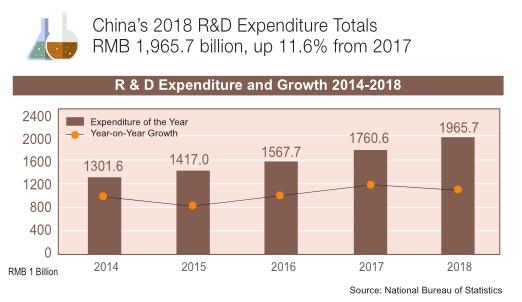Maglev Train to Hit 600 KM/H

Maglev Train to Hit 600 KM/H
CRRC Qingdao Sifang Co., Ltd. recently unveiled a prototype magnetic levitation train with a designed maximum speed of 600 kilometers per hour in Qingdao, Shandong Province. The debut of the prototype marks a major breakthrough by China in the high-speed maglev train field.
Ding Sansan, head of the train research and development team and deputy chief engineer of CRRC Qingdao, said the prototype can help check and optimize key technologies and core system components of the high-speed maglev system and lay a technological basis for an engineering prototype.
“We are building an experimental center and a trial production center for high-speed maglev trains and expect to put them into operation in the second half of this year,” Ding said, adding that research and development of a five-carriage engineering prototype is proceeding smoothly.
The engineering prototype, a key project in the Ministry of Science and Technologys 13th FiveYear Plan (2016-2020) to promote an advanced railway system, is expected to roll off the production line next year and in 2021 undergo comprehensive testing and be made ready for commercial manufacturing.
Chinese high-speed trains currently have a top operating speed of 350 km/h, while the cruising speed of commercial aircraft is about 900 km/h. A high-speed maglev running at 600 km/h could narrow the gap between high-speed rail and air travel.
China Releases Whitepaper on Trade Frictions with the U.S.
In June, the State Council Information Office released the whitepaper Chinas Position on the China-US Economic and Trade Consultations.
The document says, since it took office in 2017, the new U.S. administration has threatened to add additional tariffs and other measures and provoked frequent economic and trade frictions with its major trading partners. In response to the economic and trade frictions unilaterally initiated by the U.S. since March 2018, China has had to take forceful measures to defend the interests of the nation and its people. At the same time, committed to resolving disputes through dialogue and consultation, China has engaged in multiple rounds of economic and trade consultations with the U.S. in an effort to stabilize the bilateral commercial relationship.
Chinas position has been consistent and clear – that cooperation serves the interests of the two countries, that conflict can only hurt both sides, and that cooperation is the only correct choice to bring about a sustainable resolution. Concerning their differences and frictions on the economic and trade front, China is willing to work together with the U.S. to find solutions, and to reach a mutually beneficial and win-win agreement. However, cooperation has to be based on principles, and there are bottom lines in consultations. China will not compromise on major issues of principle. China does not want a trade war, but it is not afraid of one and it will fight one if necessary. Chinas position on this has never changed.

Strong Growth for Online English Education
Online English-language courses for children saw an explosive growth in 2018, according to a report released by data-monitoring firm Trustdata. The report stated that the market had more than 15 million users last year, up 168.3 percent year-on-year. The market size was RMB 21.3 billion in 2018, and is expected to surpass RMB 50 billion (US$7.3 billion) this year.
Market shares now concentrate in a few top players, with VIPKID alone taking up 68.4 percent of the market. The penetration rate of online education rose from 0.8 percent in 2015 to 9.1 percent in 2018, up 11 fold within four years. Its projected that the penetration rate will reach 12 percent in 2019. People in first- and second-tier cities make up 65 percent of all paid users, and the number of users in third- and fourth-tier cities is growing.
The quality of foreign teachers is also a key factor for parents to take into consideration when choosing English learning platforms. The foreign teachers of Chinas online English education brands mainly come from North America, Europe, and Southeast Asia.
IP Protection in Progress
At the end of 2018, the mainland owned a total of 1.6 million patents and 19.56 million registered brands, which place China in a leading position in intellectual property.
Over the past years, the country has steadfastly improved its capacity for IP registration and examination. More than 13,000 professionals are working in this field. They handled 808,000 invention patent applications and brand registration applications last year. Surveys show the public gave the score 76 for satisfaction about Chinas IP protection in 2018, compared with 63 in 2012. At the 2019 High-Level Forum on China IP Protection, the World Intellectual Property Organization Director General Francis Gurry thought highly of Chinas achievements in IP protection.
Over the past decades China has also strengthened its legal system for IP protection. It handles the largest number of IP, especially patent cases worldwide. Last year China paid US $35.8 billion in licensing royalties for foreign patents. It is also now the worlds fourth largest patent importer.

